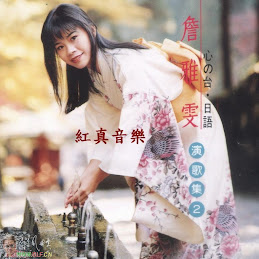The faith and trust which every healthcare professional has from the staffs and patients are earned through discipline and hard work together with the professional guidance from the senior staffs. SGH knows this successful philosophy and has put in tremendous effort to ensure that their staffs share, teach, rebuke, correct, train and even learn from their junior the proper operational procedure and etiquette of a healthcare professional.
We will always thrive to give the patient the best medical care and utmost comfort. They will bring home their good health which they once have, and the memories of our warm, support, understanding and loving attentions.
Picture posted by Woman.excite Japan Co. on 08 February 2015 at 19:59 pm
https://blogger.googleusercontent.com/img/b/R29vZ2xl/AVvXsEjVFBVUPt_7njW-B-RXq12re2Uwc5jsNU3bJ-1Iwakq1mv7ucQOD0UfMzlfhgKTNEdB4OxvQwsEwmUqZkhu751WbI6MHCWxKOe4m0WqLTIm24Cgmwaoz3OlsGMU0OQnxZC6VhjGtTrz-jwf/s1600/FKoigaku_37049_1.jpg-1.jpg
https://imgc.eximg.jp/i=https%253A%252F%252Fs.eximg.jp%252Fexpub%252Ffeed%252FKoigaku%252F2016%252FKoigaku_37049%252FKoigaku_37049_1.jpg,zoom=1200,type=jpg
https://woman.excite.co.jp/article/love/rid_Koigaku_37049/
What seems to be a long attachment is finally coming to an end. It was a very eventful 6 weeks and I’ve definitely learned many new things along the way.
The greatest difference between a medical ward and a surgical ward would be the conditions of the patients. Specifically, I felt that the patient’s condition can change more rapidly and drastically in the medical ward. After witnessing 1 or 2 cases of such changes, it serves as a reminder for me to be alert to patient’s condition especially when they do not voice out that they are feeling uncomfortable.
Picture posted by New Jersey Health Insurance Specialist
https://blogger.googleusercontent.com/img/b/R29vZ2xl/AVvXsEidJkFMkUNbVud9_L6nRvWJvDtoA-mPTiViPNHqnAfaqpC6gA3FmqOrY537lm7mxwPJMe9gJ43Uaz8NiSujyKv3tXq2N5XE15-czBZC22B2cPJapYvPvqBC0y0nHYd9JdRtndeUl2DQNhFy/s1600/pokemon-go-health-insurance-nj.jpg
https://newjersey-insurance.net/wp-content/uploads/2016/07/pokemon-go-health-insurance-nj.jpg
https://newjersey-insurance.net/new-jersey-health-insurance/
Picture posted by House of physiotherapists
https://blogger.googleusercontent.com/img/b/R29vZ2xl/AVvXsEiSLtxXM7MNq2WbqKHJQM3ibl6rbMyl6uHImXcplAyvP0M1e-QXp45IzTf23oFiumo-B-s6EaHyGcLBfEcmYISMiwiV6hOmjaOihfd3MK53ceP_rGqdsYYezt8RlP5KbzNRuU9Vxn08JKqG/s1600/fracture_jambe.jpg
https://www.maisondeskines.com/_upload/ressources/ma-reeducation/fracture_jambe.jpg
https://www.maisondeskines.com/ma-reeducation/membre-inferieur
Being in a respiratory ward has also left me helpless sometimes. There were moments where the patient told me they were feeling breathless. I did what I could to position them, check their parameters, and inform staff nurse to ensure that necessary medications were administered. However, the condition was not improving. Because of that, I constantly tell myself what else I could have done to make the situation better but sad to say, there were cases where nothing can be done.
Picture posted by Depositphotos - An asian man lying in bed at hospital ward. Patient in oxygen mask lying in hospital ward with heart rate monitor and equipment for blood transfusion.
https://blogger.googleusercontent.com/img/b/R29vZ2xl/AVvXsEiq6lnDQuzOFpPx_E869CS8zLvaiwn4B5GDiDQ471EgCUSc2J8N-_ehy1HbE3rgJw2BHPhDc5nXPrKTfS9DDnQ5zKSkP13L53NtknNFfpniZNGaXjdQADtR9J3CjxInWkZPrzpByfuLUb6n/s1600/patient-lying-in-hospital-bed-1.jpg
https://st2.depositphotos.com/1001599/11974/v/950/depositphotos_119746918-stock-illustration-patient-lying-in-hospital-bed.jpg
https://cn.depositphotos.com/119746918/stock-illustration-patient-lying-in-hospital-bed.html
Another improvement I felt through these 6 weeks is the speed at which I am getting things done. Slowly but surely I am learning how to take reports, respond to patients, locate items, execute procedures, use the COW better and faster, etc. Making progress is definitely important in boosting our morale. Additionally, our clinical instructors would give us feedback and test us regularly to trigger our critical thinking. I guess a little bit of stress once in a while is good, such as being push to our limits.

PHOTO: Another improvement I felt through these 6 weeks is the speed at which I am getting things done. Slowly but surely I am learning how to take reports, respond to patients, locate items and execute procedures better and faster.
Our hospitals in Singapore are going high-tech and Computer On Wheel are being used in many tasks like nurse medication dispensing, presentation, and patient care planning. All these tasks can now be carry out with the help of these COWs almost anywhere, and information are available almost instantly within the hospital.Knowing the medication for a patient is already an indication of what could possibly be the condition of the patient. We can then recommend, for example, the correct meals selection to the patients. A patient with irregular heart beats will not be offered coffee, tea or milo. Strictly no caffeine because it can irritate the central nervous system further. Any food or fruits with high potassium content may increases the body's potassium level above the unacceptable 5.1 value, and is therefore not appropriate to be taken.
Picture posted by Rubbermaid Healthcare
https://blogger.googleusercontent.com/img/b/R29vZ2xl/AVvXsEi9sWuMHnoCiNtC9B67YKQff6WHA7Ln7JIiLJMD7bUe3mkLhlpXpEk5ZoaZNcRhtttjiusB7shC00Qu7OIxiW2TkJKRdaNSPRQAaYUBUoFpyYG7MXpOF7WIH35iyXhcSNxxCZ3XcUp8ri4e/s1600/computer-carts-overview-1.png
https://www.rubbermaidhealthcare.com/products/pages/computer-carts-solution.aspx
http://veryfatoldman.blogspot.sg/2017/06/singapore-general-hospital-attachment_5.html
Lastly, I am quite satisfied with the posting these 6 weeks. Although I am still lacking in many areas and there are yet many more new things to learn, I will ensure that my basics are strong as good foundation skills are needed before we can proceed with mastering higher level skills.
Whatever happens, we must never leave the path of care, comfort and well-being of the patients who will truly be the source of our inner joys and blessings. These are the discovery we made at SGH from its staffs and management. The journey is tough and the going is rough at times, but we can say that "together we can make it".
The fond memories of the past still remains in our hearts, and will remain so, for a long time to come.
Photo by FPG, 1951, A nurse administers an injection to a patient's arm
Picture posted by Undress Me - The Classics of Care (Science) on 15 november2015
https://blogger.googleusercontent.com/img/b/R29vZ2xl/AVvXsEh5LctDCkl_c0u2wjsAQ4JVI_x0kCXZ6PeexjFVRk249q-k-jgW5hOW7Q7cv2mmzuwfzPbS3pVQOfcwg8fJfMkVqEm6oNh8XRTEFSKMoD79wEQbo6orQYTEyskrXcj3ojWPBQcf0FjtiazA/s1600/l4611-815x1024.jpg
http://www.radiocampusparis.org/wp-content/uploads/2015/11/l4611-815x1024.jpg
http://www.radiocampusparis.org/deshabillez-moi-les-classiques-du-soin-15112015/
- https://blogger.googleusercontent.com/img/b/R29vZ2xl/AVvXsEjVFBVUPt_7njW-B-RXq12re2Uwc5jsNU3bJ-1Iwakq1mv7ucQOD0UfMzlfhgKTNEdB4OxvQwsEwmUqZkhu751WbI6MHCWxKOe4m0WqLTIm24Cgmwaoz3OlsGMU0OQnxZC6VhjGtTrz-jwf/s1600/FKoigaku_37049_1.jpg-1.jpg
- https://imgc.eximg.jp/i=https%253A%252F%252Fs.eximg.jp%252Fexpub%252Ffeed%252FKoigaku%252F2016%252FKoigaku_37049%252FKoigaku_37049_1.jpg,zoom=1200,type=jpg
- https://woman.excite.co.jp/article/love/rid_Koigaku_37049/
- https://blogger.googleusercontent.com/img/b/R29vZ2xl/AVvXsEidJkFMkUNbVud9_L6nRvWJvDtoA-mPTiViPNHqnAfaqpC6gA3FmqOrY537lm7mxwPJMe9gJ43Uaz8NiSujyKv3tXq2N5XE15-czBZC22B2cPJapYvPvqBC0y0nHYd9JdRtndeUl2DQNhFy/s1600/pokemon-go-health-insurance-nj.jpg
- https://newjersey-insurance.net/wp-content/uploads/2016/07/pokemon-go-health-insurance-nj.jpg
- https://newjersey-insurance.net/new-jersey-health-insurance/
- https://blogger.googleusercontent.com/img/b/R29vZ2xl/AVvXsEiSLtxXM7MNq2WbqKHJQM3ibl6rbMyl6uHImXcplAyvP0M1e-QXp45IzTf23oFiumo-B-s6EaHyGcLBfEcmYISMiwiV6hOmjaOihfd3MK53ceP_rGqdsYYezt8RlP5KbzNRuU9Vxn08JKqG/s1600/fracture_jambe.jpg
- https://www.maisondeskines.com/_upload/ressources/ma-reeducation/fracture_jambe.jpg
- https://www.maisondeskines.com/ma-reeducation/membre-inferieur
- https://blogger.googleusercontent.com/img/b/R29vZ2xl/AVvXsEiq6lnDQuzOFpPx_E869CS8zLvaiwn4B5GDiDQ471EgCUSc2J8N-_ehy1HbE3rgJw2BHPhDc5nXPrKTfS9DDnQ5zKSkP13L53NtknNFfpniZNGaXjdQADtR9J3CjxInWkZPrzpByfuLUb6n/s1600/patient-lying-in-hospital-bed-1.jpg
- https://st2.depositphotos.com/1001599/11974/v/950/depositphotos_119746918-stock-illustration-patient-lying-in-hospital-bed.jpg
- https://cn.depositphotos.com/119746918/stock-illustration-patient-lying-in-hospital-bed.html
- https://blogger.googleusercontent.com/img/b/R29vZ2xl/AVvXsEi9sWuMHnoCiNtC9B67YKQff6WHA7Ln7JIiLJMD7bUe3mkLhlpXpEk5ZoaZNcRhtttjiusB7shC00Qu7OIxiW2TkJKRdaNSPRQAaYUBUoFpyYG7MXpOF7WIH35iyXhcSNxxCZ3XcUp8ri4e/s1600/computer-carts-overview-1.png
- https://www.rubbermaidhealthcare.com/SiteAssets/img/products/in-use-images/computer-carts-overview.png
- https://www.rubbermaidhealthcare.com/products/pages/computer-carts-solution.aspx
- http://veryfatoldman.blogspot.sg/2017/06/singapore-general-hospital-attachment_5.html
- https://blogger.googleusercontent.com/img/b/R29vZ2xl/AVvXsEh5LctDCkl_c0u2wjsAQ4JVI_x0kCXZ6PeexjFVRk249q-k-jgW5hOW7Q7cv2mmzuwfzPbS3pVQOfcwg8fJfMkVqEm6oNh8XRTEFSKMoD79wEQbo6orQYTEyskrXcj3ojWPBQcf0FjtiazA/s1600/l4611-815x1024.jpg
- http://www.radiocampusparis.org/wp-content/uploads/2015/11/l4611-815x1024.jpg
- http://www.radiocampusparis.org/deshabillez-moi-les-classiques-du-soin-15112015/








































.jpg)
.gif)
.jpg)
























































